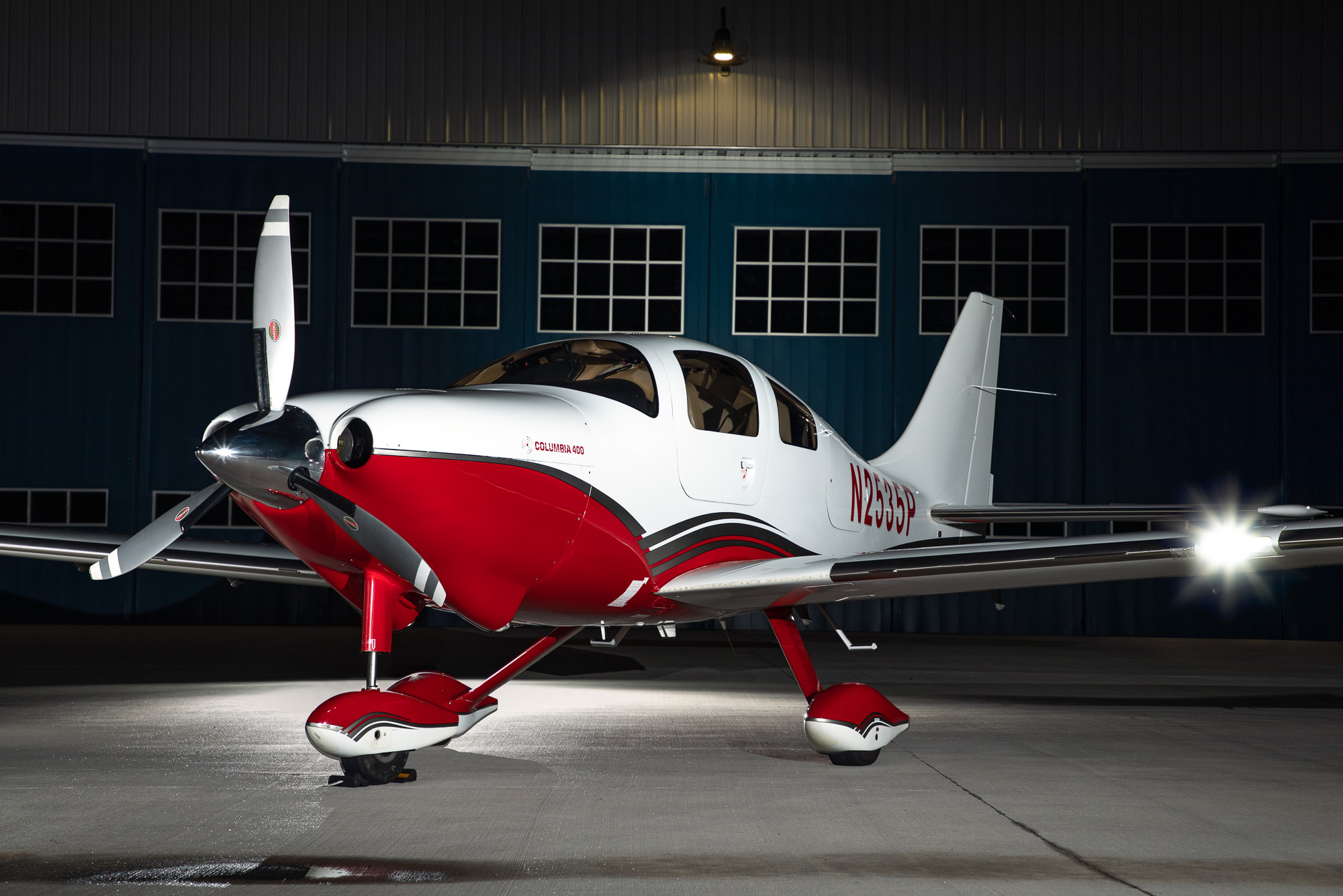Columbia Aircraft - Columbia Aircraft Manufacturing Corporation was an aircraft manufacturer that designed and built light general aviation aircraft. In November 2007 it became part of Cessna.
In 1994, NASA launched the Advanced General Aviation Transport Experiments (AGATE) program in an attempt to revive the declining general aviation (GA) market. A number of factors, including new regulatory requirements and lawsuits, made GA unprofitable, and many manufacturers abandoned piston-engined light aircraft to join the business aviation market. As a result, GA design work was standardized and aircraft sold in the 1990s were almost identical to those of the 1970s. With the boom in the used aircraft market, American GA production dropped from 18,000 in 1978 to 954 in 1993, a record low.
Columbia Aircraft

At the same time, the built-in kit market was developing rapidly. Freed from some of the problems with established aircraft and mostly occupied by testers looking for better performance, the kit market expanded rapidly in the 1980s. The designs available as kits often exceeded the performance of known aircraft and were also more explosive. Lancair's leading kit manufacturer, the high-performance Lancair IV design, set several records, including the longest flight at 360 miles per hour.
Cessna Columbia Aircraft Report 7/21/2022r
As part of AGATE, NASA used the Lancair ES as its advanced avionics. The ES was a fixed landing gear version of the leaky Lancair IV. Lancair founder Lance Nybauer boldly promised a design that would make it one of the first all-new GA aircraft offered in years.
In Redmond, Oregon. At first it only wanted to expand production of the Lancair aircraft line, the new factory was re-registered as Lancair Certified and was used as the main site for what is known as the Lancair LC-40, for "Lancair Certified, model 40". The first prototype flew in July 1996, followed by a certified prototype in early 1997.
After a long design and certification process, the aircraft was officially certified on September 18, 1998 as model LC40-550FG and marketed as the Columbia 300.
Lancair Certified was created by Columbia Aircraft Manufacturing Corporation in 2005 to focus on new projects. In March 2003, Neibauer sold the company's kit assembly division, Lancair International, to Joseph Bartels.
Lancair Lc42 550fg Columbia 350
But it only held that title for a short time until the turbocharged FADEC Columbia 400 (model LC41-550FG) flew in June 2000. The 400 also featured a new glass cockpit developed under the AGATE program, which Columbia calls Highway in the Sky (HITS). The 400 was confirmed on March 30, 2003.
The upgrades used in the Columbia 400 were incorporated into the original 300 design to create the LC42-550FG, marketed as the Columbia 350. It was introduced in April 2002 and confirmed on April 8, 2004.
In January 2003, Composite Technology Research Malaysia (CTRM) bought a controlling stake in Columbia for more than $50 million. CTRM is owned by the Government of Malaysia and was established in November 1990 by the Minister of Finance Malaysia Inc. Head of the CTRM, Col. Rosdi Mahmud is retired. CTRM was interested in selling its stake in the company in 2006.

All of the Columbia aircraft competed closely with similar designs from Cirrus Design, which were also developed under AGATE and included many other features. First on sale, the SR22 outsold the Columbia models by a wide margin.
Columbia 350 For Sale
On September 24, 2007, Columbia Aircraft announced that Textron would buy the company, which would be combined with its Cessna division, including a line of high-performance single-aisle aircraft. Part of the deal to sell Columbia Airlines was the waiver of Chapter 11 bankruptcy protection. The plan is subject to bankruptcy court approval and a final settlement with Cessna.
The situation with Columbia Airlines became more complicated on October 14, 2007, when the bid to acquire Columbia Airlines was supported by three other companies. These were competitor Columbia Cirrus Design, as well as Versa Capital Managemt and Park Electrochemical Corp. The two most recent companies have filed for bankruptcy, saying Cessna is "receiving voluntary assistance in the process."
On November 20, 2007, Cirrus Design announced that it would not proceed with the acquisition of Columbia, citing Columbia's critical issues and that resolving them would require significant resources.
On November 27, 2007, Cessna subsidiary Textron announced that Cessna Aircraft had become the successful customer for Columbia Aircraft, that the Columbia 350 and 400 had been upgraded to the Cessna 350 and Cessna 400, and that all existing Columbia aircraft would be maintained by Cessna.
Lancair Columbia 350 Sp Nab
Cessna paid the company US$26.4 million and offered to invest in the company's current site at the southeast corner of the Bend Municipal Airport in Bend, Oregon.
On April 29, 2009, Cessna announced that it would close the former Columbia plant in Bend, Oregon, where the Cessna 350 and 400 were built, and move production to Kansas. The company laid off all 150 workers remaining at the Bd plant.
Columbia aircraft engines, columbia 300 aircraft, columbia aircraft sales, columbia 400 aircraft, columbia aircraft for sale, columbia 350 aircraft, columbia 300 aircraft for sale, columbia aircraft crash, columbia 400 aircraft for sale, columbia aircraft corporation, aircraft rental columbia sc, columbia aircraft services
0 Comments